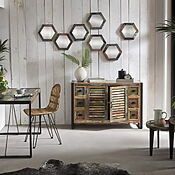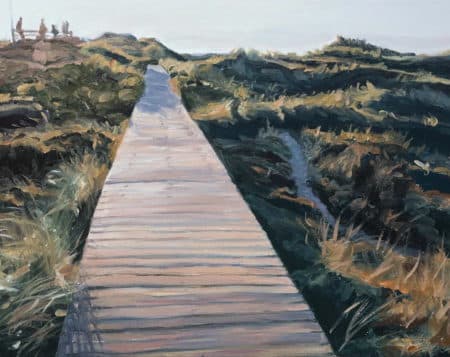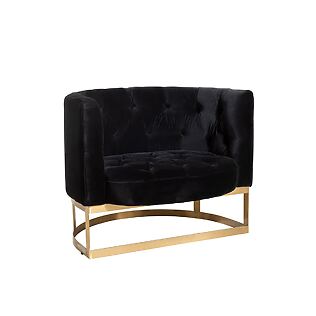Fashion Art can be seen as a crossover between fashion and art, as it offers a symbiosis of creative expression and aesthetic innovation. In this form, clothing is not only regarded as a functional piece of fabric, but rather as a canvas for artistic ideas and intellectual concepts.
Cooperation and co-creation between artists and fashion designers creates its own cultural space that combines identity, self-development and social reflection. Quality goes beyond mere clothing: it is a reflection of contemporary values, philosophies and aesthetics.
Andy Warhol's famous saying "Fashion is more art can" experiences a current relevance here, because fashion art blurs the boundaries between fashion and art in an inspiring way and creates space for critical arguments in an increasingly consumer -oriented world.

photo by Clarissa Watson @issaphotography, via Unsplash
In the current magazine band of the Kunstforum International host editor Pamela C. Scorzin invites you to reflect on the current connection between fashion and art. It raises the question of whether today's separation is still important and when we can speak of 'fashion art' . Using examples such as Chanel, Beyoncé and Yayoi Kusama , Scorzin dissolves how closely these two areas can be intertwined.

Body art and fashion: art on your own body
Loving art often means that this enthusiasm and passion can be integrated into your daily life as possible - so much that you want to wear art almost on your own body. This impressive thought manifests itself particularly impressively for Pamela C. Scorzin when you look at trade fairs and museums. It also shows himself when you take a closer look at the fashionable preferences of art collectors inside and artists inside.
It can be seen quickly how they staged themselves in the art world and subtly underline their social habit. Their fashionable appearance is often not only an expression of style, but also a significant staging for personal identity and individuality.

of image source: McGill Library @mcgilllibrary, via unsplash
In fact, your own creativity and cultivation is often fashionable as a distinction feature. It is as if every piece of clothing tells its own story and at the same time opens a window to the individual perspective. At a time when tattoos have become the common form of personal expression - many younger people proudly show their body art , which is often artistic and meaningful - the clothing for Scorzin represents the closest level of staging.
Here, colors, shapes, patterns and ornaments develop in a remarkable interaction. Each piece of fabric can not only flatter body shape, but also "present" .
It is the interface between art and everyday life , where clothing becomes a medium - an expression of aesthetics, identity and philosophy, combined in a single outfit. On closer inspection, you can see that fashion is far more than mere clothing ; It is part of the artistic dialogue that challenges existing conventions and at the same time creates new social narratives.

photo of naim jafari @naimj, via unsplash
The viewer does not only notice what is worn; He also feels a certain attraction to the values and ideals that are embodied by this fashion. Clothing thus becomes a living range of inspiration and creativity that goes far beyond the limits of classical art.
This visual language offers both access and incentive to deal with art in general. By illustrating their personal connection to art through fashion, they actively contribute to the creation of a cultural discourse that is both stimulating and accessible. This game with identity and expression shows us in an impressive way how deeply interwoven the relationship between art and fashion is - a relationship that inspires and inspires.
The entanglements of fashion and art since postmodernity: an analysis by Natasha Degen
Since postmodernity , this relationship has developed into a fascinating dialogue and finely branched braid. Natasha Degen is a professor and chair holder for art market studies at the fit in New York City. She acquired one at Princeton University and an Mphil and PhD at the University of Cambridge. In the current volume of the Kunstforum International, she takes us deep into an analytical journey deep into the relationship between fashion and art.
The postmodernity and its meaning
In order to understand the fusion of fashion and art since postmodernity, we first have to understand what postmodernity is. The postmodernity, which began in the late 1960s, is a movement that turned against the clear rules and norms of modernity. With a wink, she said goodbye to the idea of the absolute truth and greeted the polyphony and fragmentation.
Imagine you enter an art gallery and suddenly you hear not only the whispering of the visitors, but also the incomprehensible murmur of the works themselves. The postmodernity invites us to celebrate the variety and to dissolve the boundaries between high culture and popular culture, between art and everyday objects.
Fashion as an expression of art
Fashion has always understood itself as a form of self -expression. But since the postmodernity she has received an even deeper symbiosis with art. The first milestone for this was certainly the influence of pop art , which blew up all the conventions in the 1960s. Andy Warhol, the master of pop art, was known for not only working with color and canvas, but also with fabric and needle. His famous Campbell soup can boxes can be found not only in museums, but also on clothes, T-shirts and bags.
Warhol's studio, The Factory , was a pulsating hotspot, on which artists, musicians, actors and fashion designers frolicked in a creative beehive. An example of this creative synergy is Warhol's cooperation with the fashion designer Halston , which led to a collection that collided the glamor of Studio 54 .
Another interesting example is the collaboration between the designer Yves Saint Laurent and the painter Piet Mondrian . Yves Saint Laurent, fascinated by Mondrian's geometric abstractions, designed the iconic Mondrian dress in 1965. With its clear lines and the bright primary colors blue, red and yellow, which rest on a white background, the dress became a pioneering example of fusion of fashion and art.
Fashion as a canvas
A big change came in the 1990s when fashion houses began to integrate artists directly in order to design their collections. So something completely new was created: fashion as a canvas.

Photo by Nicolas Ladino Silva @nicolasladinosilva, via unsplash
The Japanese designer Issey Miyake Ikko Tanaka in the 1990s . Together they created clothes where Tanakas met artistic calligraphy on Miyakes elegant cuts. Such cooperations open up new horizons and show that a dress can be as expression of artistic voice as a painting.
Another time-consuming example is the legendary suit jacket by Jean-Paul Gaultier from the early 2000s, which was inspired Vincent van Gogh's "Sternnacht" Gaultier transferred the swirling starry sky that banned Vincent onto the canvas, to the finest silk and thus turned a work of art a trerms Terms & Conditions ares masterpiece.
Common topics and motifs
A deeper understanding of the fusion between fashion and art reveals that both worlds are often moved by similar issues and motifs. Here are some that have been particularly noticeable since postmodernity:
- Identity and self -expression : Both in art and fashion, it is about who we are and how we present ourselves. The artist Cindy Sherman used herself as a canvas to explore different identities, similar to how many fashion house collections that address identity and change.
- Limits and transgression : Art and fashion have been constantly challenged since postmodernity, which "acceptable" . The notorious work of Damien Hirst , for example his shark preserved in formaldehyde, and Vivienne Westwood's provocative clothing are examples of this.
- Technology and craft : With digitization and technological advances, both art and fashion have developed. Burberry 's hologram fashion shows or the digital works of art by artists such as Beeple .
Fun facts and curiosities
- The "tattoo designer" : The Korean designer Kimmy J. surprised the world with a collection that was inspired by tattoos. Her clothes looked like human skin with traditional and modern tattoos. This work of art was strongly reminiscent of the work of the tattoo artist Henk Schiffmacher .
- Fashion in the museum : The exhibition "Savage Beauty" , which was shown after Alexander McQueen's death in the Metropolitan Museum of Art in New York, broke all visitor records. More than 600,000 visitors came - a testimony for how much fashion is also valued as an art form.
- Fashion meets installation Art : The artistic installations of Hussein Chalayan are among the most extraordinary mergers of fashion and art. A highlight of his career was the "flowing dress" , which could change its shape and color through mechanical devices - a masterpiece of technology and design.
See this post on Instagram
Fashion and art: an infinite parallel
The history of the relationship between fashion and art is rich and diverse. What stands out clearly is that these two worlds not only run in parallel, but also often overlap and fertilize each other. This dialogue has gained depth and complexity since postmodernity. Artists see fashion as an extended medium, while fashion designers find a source of inspiration in art.
My personal experiences and observations in museums and fashion shows have taught me that this close relationship offers us a new perspective on both disciplines. It is an ongoing conversation that always opens up new facets and opportunities.
How to merge art, fashion, design and photography in scenography
When open-minded fashion labels with contemporary artists , fashion-conscious design creators with progressive architects and innovative scenographer ally with subtle art experts, then something future-oriented happens in this melting pot of creativity.

photo of Adil Janbyrbayev @Adekin, via Unsplash
According to architect and editor Janina Poesch one of the numerous fashion weeks in the world's metropolises, celebrating the latest trends and creative visions. Or the Milan Furniture Fair opens its doors and demonstrates how functionality can be reinterpreted through artistic design traditions. And don't forget the annual benefit gala at the New York Metropolitan Museum of Art, where art and society come into dialogue in a particularly impressive way.
See this post on Instagram
But at a time that is shaped by quick change, it is often no longer possible to determine which event is taking place. The boundaries between the disciplines are no longer as clear as it was once; They are increasingly blurring. Fashion, design, architecture, photography and art are in the process of combining a creative unit, the radiance of which rises to new heights. This transdisciplinary melange not only creates new forms of expression; It also attracts a demanding target group that attaches importance to innovation and is willing to pay for unique experiences.
This is precisely here in the eyes of Poesch the strengthening of the "Experience Economy" , which illustrates that fashion is no longer only intended for our bodies. Rather, it is designed as part of a more comprehensive cultural experience. In this context, design is much more than just a functional necessity - it becomes a medium for emotions and stories.
And art? It no longer only takes place in the museum; It runs through all areas of life and leads us to question our usual perspectives.
These different genres have discovered each other as sources of inspiration . They not only received convergences, they have also acquired a new common means of expression: the scenographic area. In this room, every event - be it a fashion show, a design presentation or an art exhibition - becomes an immersive experience. The game with light, colors and proportions creates an atmosphere that appeals to the senses and captivates spectators.
The vision of such a creative symbiosis does not only develop on stages and exhibition areas; At the same time, a cultural paradigm shift is announced.
If we follow Poesch's arguments, we are at the beginning of an exciting era. In this era, the interplay of disciplines is not only considered possible, but also one of the most exciting options for artistic expression and redesigning our world. By overcoming boundaries and forging new paths together, these creative thinkers are designing a future full of inspiring experiences. These experiences can challenge us, stimulate reflection, and awaken the potential within us to take action ourselves.

Owner and Managing Director of Kunstplaza. Publicist, editor, and passionate blogger in the field of art, design, and creativity since 2011. Successful completion of a degree in web design as part of a university program (2008). Further development of creativity techniques through courses in free drawing, expressive painting, and theater/acting. Profound knowledge of the art market through many years of journalistic research and numerous collaborations with actors/institutions from art and culture.

















